Creating a natural barrier along your fence doesn’t have to be a slow process. Fast-growing trees offer a quicker alternative to traditional privacy solutions, providing both seclusion and beauty to your landscape.
These rapid growers serve multiple purposes, from blocking unwanted views to attracting wildlife. Unlike static fences, these living screens change with the seasons, adding dynamic interest to your outdoor space.
Here are 10 fast-growing trees that are perfect for planting along your fence, helping you achieve privacy and improve your yard in record time.
Arborvitae
Because of its lush evergreen leaves, arborvitae grows well in zones 3 through 7 of U.S. hardiness. In ideal circumstances, this tree grows at a moderate rate, adding 12 to 24 inches every year. Popular types include ‘Green Giant,’ known for its rapid growth and inherent resistance to deer, and ‘Emerald Green,’ which is compact and narrow, ideal for tiny spaces. When compared to many other evergreens, they require very little maintenance.
- USDA Hardiness Zones: 3-7
- Light: Full sun to partial shade
- Soil: Moist, well-drained, slightly acidic to neutral
- Mature Size: 20-30 ft. tall, 10-15 ft. wide (varies by cultivar)
- Deer Resistant: No
Italian Cypress
Italian cypress, which is commonly found in Mediterranean landscapes, grows best in USDA Hardiness Zones 7 through 10, where it can withstand cold and drought. This tree should be planted in the cooler months of fall or spring to ensure that the root system takes hold before the summer heat. Due to its moderate resistance to disease, Italian cypress is a hardy option that works well in both urban and garden settings.
- USDA Hardiness Zones: 7-10
- Light: Full sun
- Soil: Well-drained, adaptable to various soil types
- Mature Size: 40-60 ft. tall, 3-5 ft. wide
- Deer Resistant: Yes
Privet
Privet is a popular choice for producing fast hedges because of its quick growth rate, which can achieve maturity in a few of years. When the earth is moist and the temperature is lower, fall or early spring is the ideal time to plant privet. Privet’s ability to withstand disease and grow without the need for intensive chemical treatments or other interventions is one of its most alluring qualities.
- USDA Hardiness Zones: 5-9
- Light: Full sun to partial shade
- Soil: Well-drained, adaptable to various soil types
- Mature Size: 4-15 ft. tall, 4-8 ft. wide (varies by species)
- Deer Resistant: No
Forsythia
As a shrub that grows quickly, forsythia is often planted in the fall or early spring and is a favorite among gardeners who want to see results quickly. Before the leaves appear in the early spring, this plant puts on a stunning exhibition of bright yellow blossoms that announces the arrival of a new season. Forsythia, well-known for its resistance to disease, needs little care to be healthy, making it a low-maintenance choice for a variety of garden environments.
- USDA Hardiness Zones: 5-8
- Light: Full sun to partial shade
- Soil: Well-drained, adaptable to various soil types
- Mature Size: 8-10 ft. tall, 10-12 ft. wide
- Deer Resistant: Yes
Thuja Green Giant
Due to its fast growth rate, Thuja Green Giant is a well-liked option for rapidly installing privacy screens. Fall or early spring planting is ideal since it gives the tree time to build its root system before severe weather. Because of its resistance to deer, this kind is a great choice in locations where the animals are common and have the potential to harm other forms of flora.
- USDA Hardiness Zones: 5-9
- Light: Full sun to partial shade
- Soil: Well-drained, adaptable to various soil types
- Mature Size: 50-60 ft. tall, 12-20 ft. wide
- Deer Resistant: No
Red Twig Dogwood
Red Twig Dogwood exhibits remarkable seasonal variations; in the winter, its brilliant red stems create a dramatic contrast with the snow. Early spring or fall are the best times to plant since they allow the root system to form before severe weather arrives. Red twig dogwood is also well-known for having strong disease resistance, which makes it a dependable option for gardeners who don’t want to deal with a lot of chemicals or frequent attention.
- USDA Hardiness Zones: 3-8
- Light: Full sun to partial shade
- Soil: Moist, well-drained, adaptable to various soil types
- Mature Size: 6-9 ft. tall, 8-12 ft. wide
- Deer Resistant: No
Boxwood
Boxwood, which is frequently planted in the early spring or fall when the weather is ideal for root establishment, is chosen for its resilience to deer and rabbits. A well-liked cultivar, ‘Wintergreen,’ is renowned for its tightly packed growth and evergreen, dark green leaves. Regular trimming is one of its maintenance needs since it keeps the plant dense and healthy while also assisting in maintaining the correct shape.
- USDA Hardiness Zones: 5-9
- Light: Full sun to partial shade
- Soil: Well-drained, slightly acidic to alkaline
- Mature Size: 3-5 ft. tall, 3-5 ft. wide (varies by cultivar)
- Deer Resistant: Yes
Hydrangea Tree
Growing one to two feet a year on average, hydrangea trees have a moderate growth rate and require several years to reach full size. One of the most well-liked types is the ‘PeeGee’ hydrangea, which is distinguished by its big clusters of white flowers that mature to pink. Highly valued for their ability to withstand diseases, hydrangea trees can withstand common problems like powdery mildew, which makes them a resilient addition to many gardens.
- USDA Hardiness Zones: 3-8
- Light: Full sun to partial shade
- Soil: Moist, well-drained, rich in organic matter
- Mature Size: 8-15 ft. tall, 6-12 ft. wide
- Deer Resistant: No
Holly
The evergreen foliage of holly trees is well-known for its dark green color and beautiful red berries that appear in the winter. US Hardiness Zones 5 through 9 are ideal for growing these trees, which are adaptable to a wide range of temperatures. The smaller Japanese holly, which usually reaches 10 feet, and the larger American holly, which can reach 50 feet, are popular kinds. Holly can adapt well to a variety of soil types and situations thanks to its extensive root system.
- USDA Hardiness Zones: 5-9
- Light: Full sun to partial shade
- Soil: Well-drained, acidic
- Mature Size: 15-50 ft. tall, 8-25 ft. wide (varies by species)
- Deer Resistant: Yes
Crepe Myrtle
Planting crepe myrtle trees in the early spring or fall allows them to benefit from milder weather conditions. When it comes to fast landscaping projects, these trees are a popular choice because of their moderate growth rate and ability to attain maturity in a few years. Furthermore, because crepe myrtles are resistant to most diseases, they require less treatments and require less work to maintain.
- USDA Hardiness Zones: 6-10
- Light: Full sun
- Soil: Well-drained, slightly acidic to neutral
- Mature Size: 15-25 ft. tall, 6-15 ft. wide (varies by cultivar)
- Deer Resistant: Yes
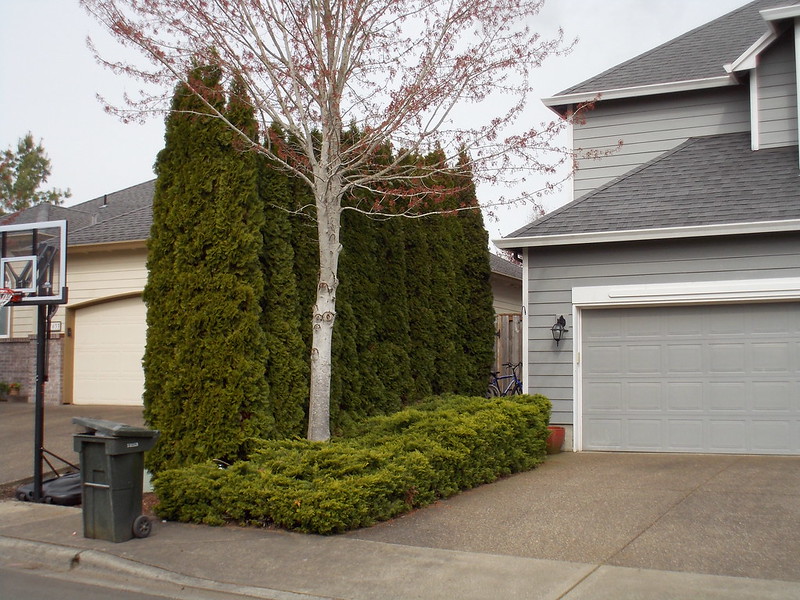
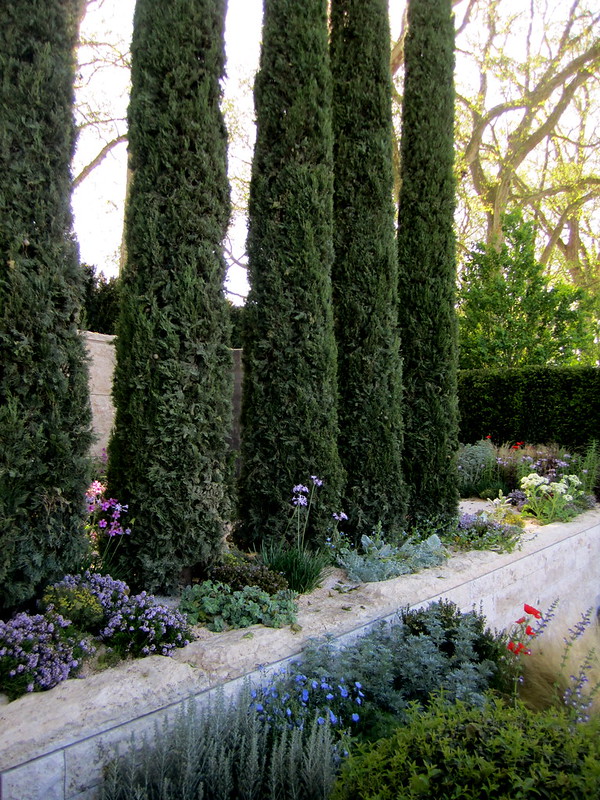
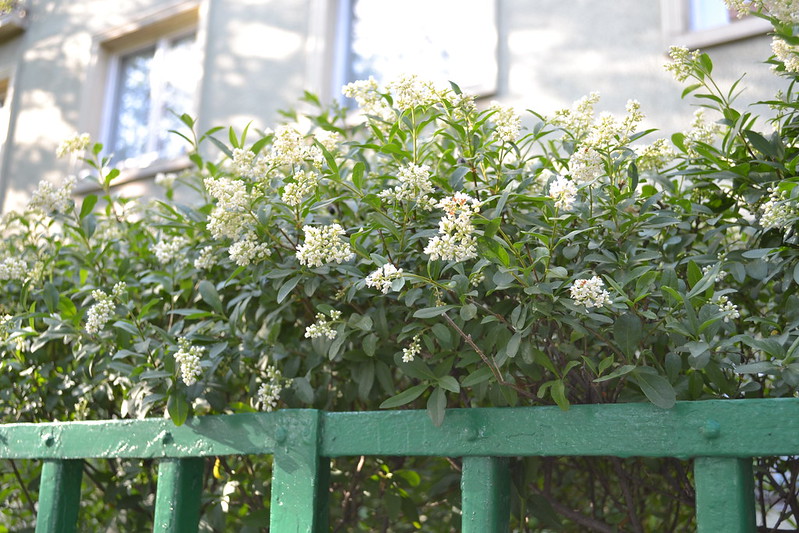
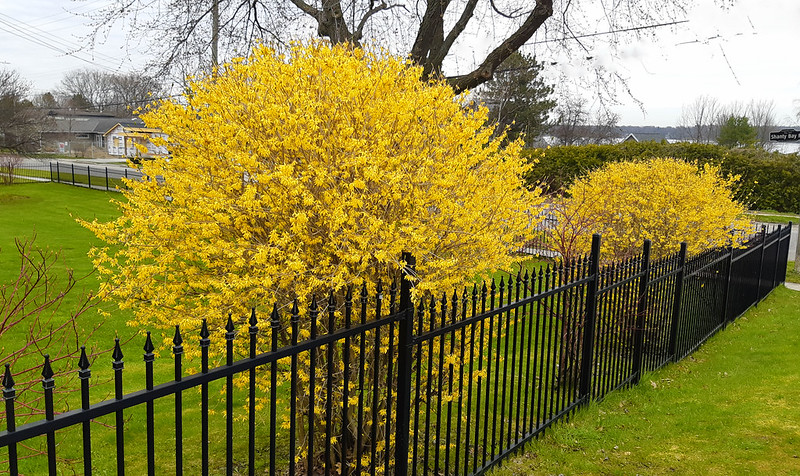
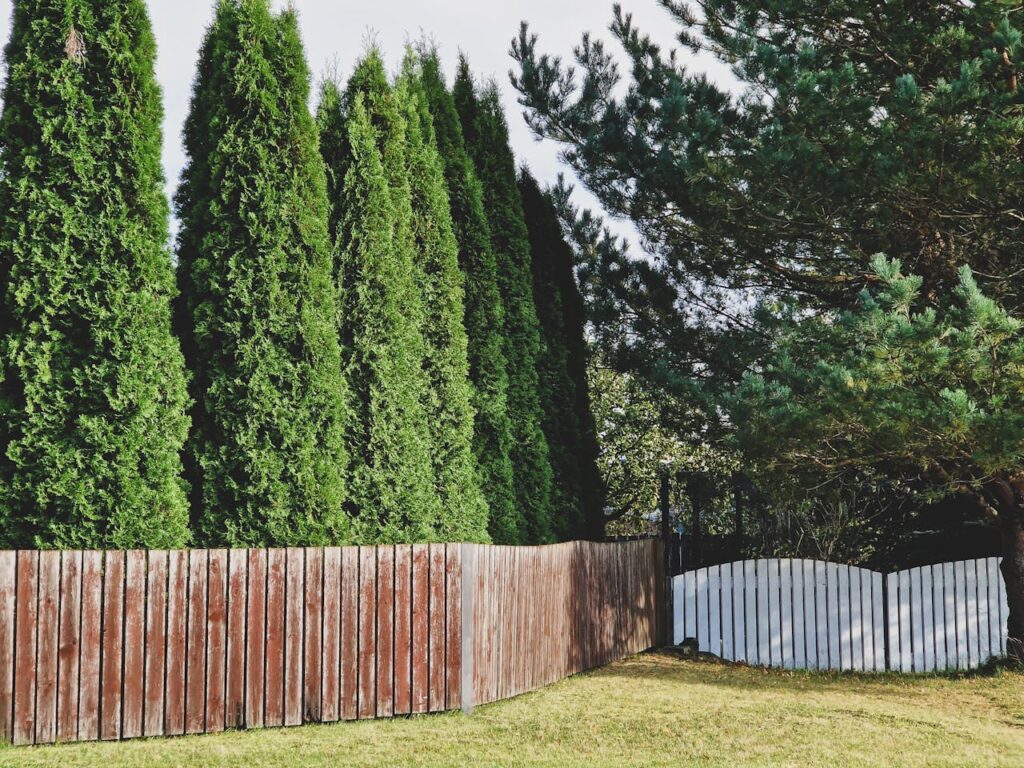
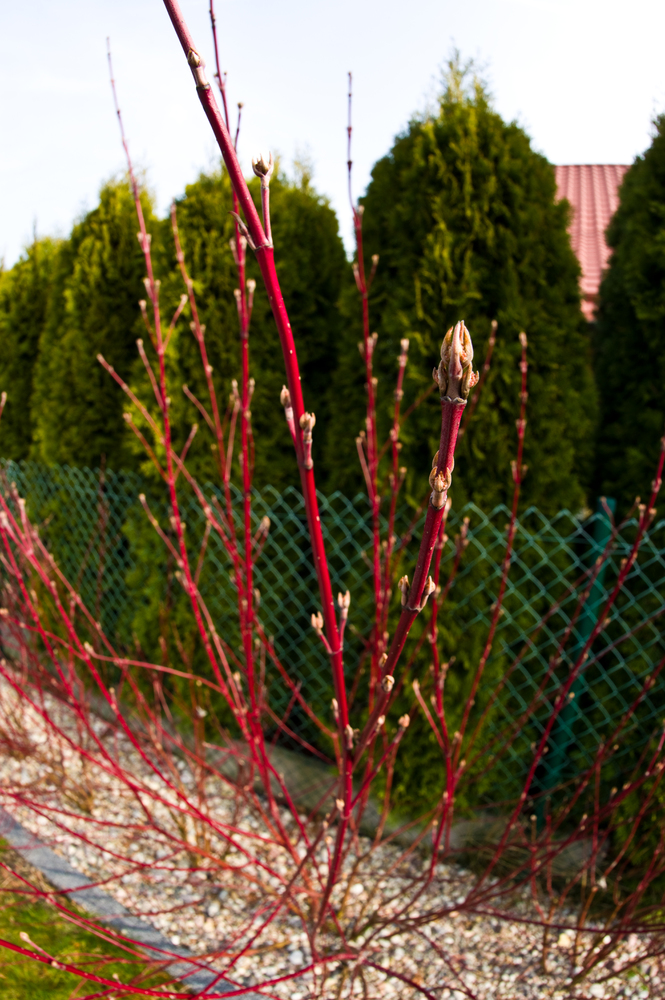
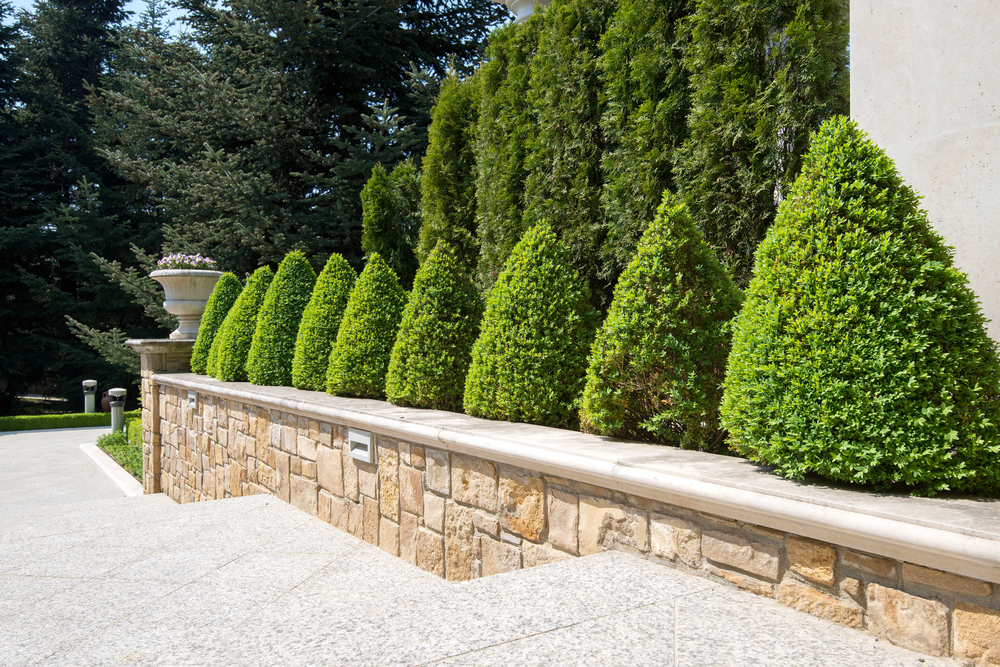
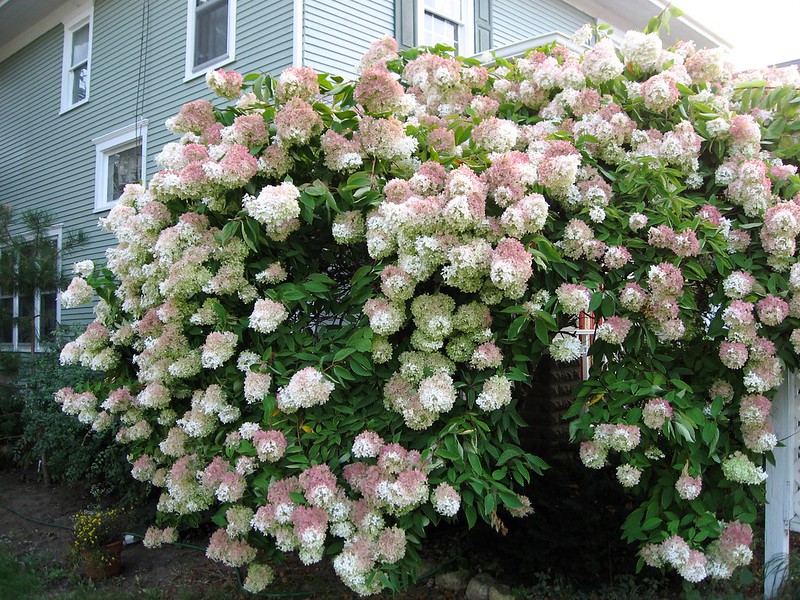
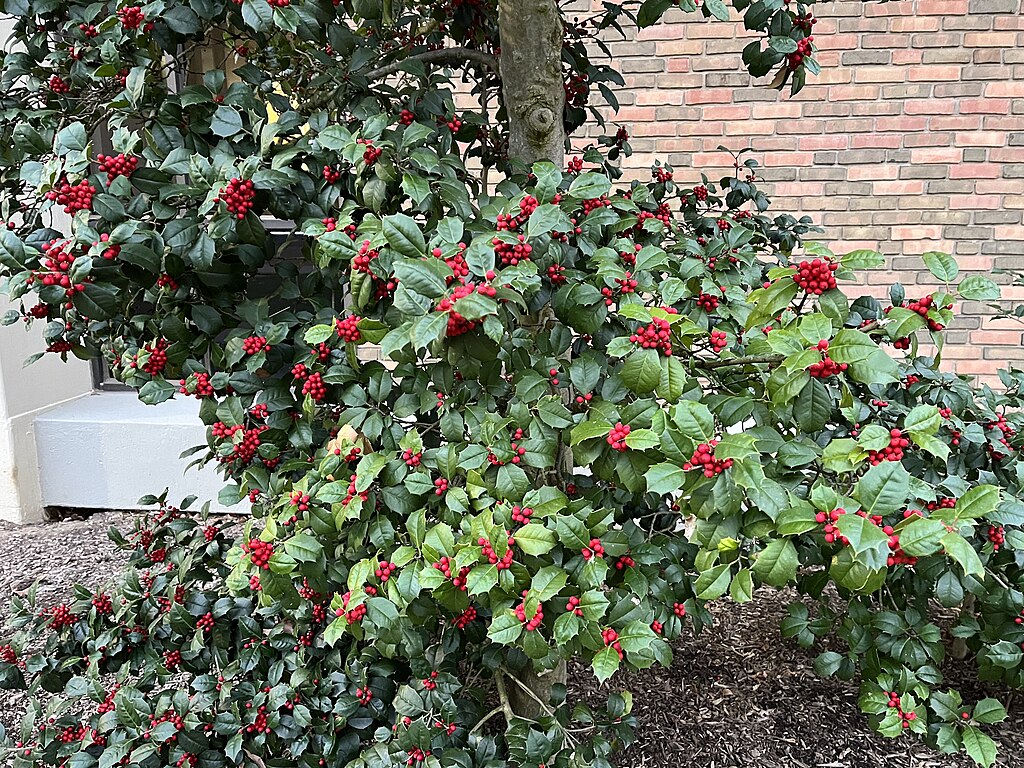
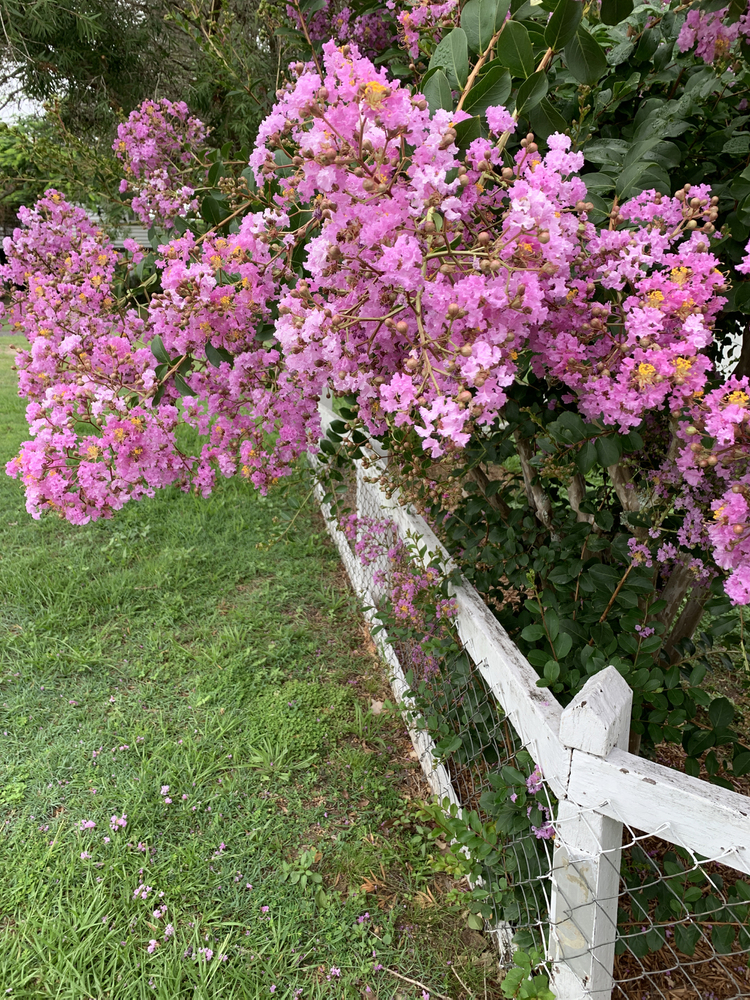


good~~!
Love all your ideas. I will read more of them.thx
Thank you so much, Jose! I’m glad you found the ideas helpful and enjoyable. 🙂
Great list. The flowering options are especially nice. A word of caution about privet; it is considered highly invasive by some states
The description of Thuja Green Giant states that it is “resistant to deer and rabbits.” Under “Deer Resistant:” the answer is “No.”. This is confusing. Otherwise, a nice list of trees!